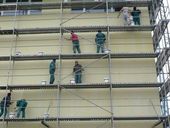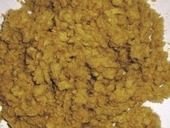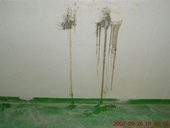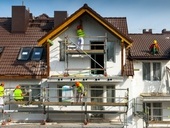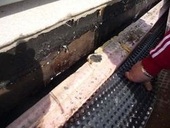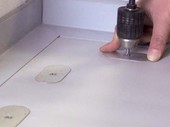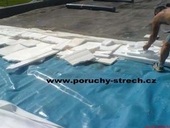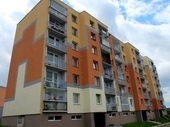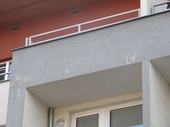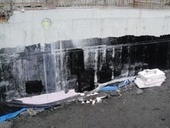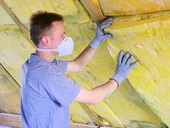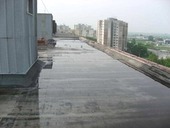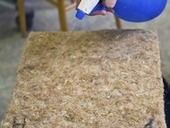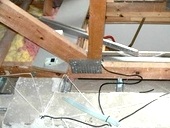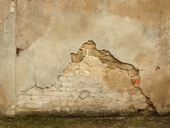There has been written a lot of information about the design and implementation of external thermal insulation composite systems (ETICS). Interestingly, despite there are still the same mistakes in the construction of ETICS. The following article summarizes once again the basic rules for ETICS and shows some typical errors. For ETICS it is recommended to respect the czech standards CSN 73 2901 and CSN 73 2902. In particular, it is necessary to respect the technological regulation of a particular manufacturer of ETICS.
Archiv článků od 9.12.2013 do 27.10.2014
Prague Building Regulations – The Analysis of the Fundamental Principles of Territorial Requirements
Prague building regulations currently represent debated and controversial topic among both professionals and the public. This is a new concept of law to which they are greatly implemented basic knowledge of urban theory and practice. The article summarizes the basic principles of the new regulation in the field of territorial requirements.
The paper describes research of utilization of solid wastes, which are produced during the manufacture of mineral wool. The aim of the four-year research is to verify the best way of processing of these waste materials and determine the maximum value of their addition into the construction materials, which will not have undesirable effect on requested properties of the final product. The verified applications are vibro-pressed thin-walled concrete blocks, thin-walled glass fiber elements, self leveling mixtures and thermal insulation panels.
Assessed white tanking is a part of flat block in residence zone in Prague. The flat block consists of three tower parts with reinforced concrete monolithically system. It has two underground storeys and it is built on the sloping plot of rectangular shape with the high difference of opposite corners more than 4 m. Arisen cracks in white tanking were sealed by grouting but infiltrated placed were appeared again. The recrystallization painting Xypex also did not help. Additionally realized drainage prevented water leakage.
Which buildings can receive grants from the Green Savings Programme, amount of the grants and what technical details cover the energy audit? Part A in this article covers the specific questions (building’s envelope rennovation). A sample of 16 family houses that comply with all the required conditions of the New Green Saving Programme from 2013 is further described in this article.
Failures of basement waterproofing is constatntly frequent subject of discussion among laymen and professionals. This issue is very topical especially with introduction of new materials. Paper deals with two groups of basement waterproofing failures, i.e. failures associated with building movement and failures caused by technological lack of discipline during concreting the basement. Both groups of failures are demonstrated by extensive photodocumentation.
Roof construction with mechanically anchored waterproofing sheets rightfully belongs to the most popular solution of roof structure not only in the industrial but also civil and residential construction. This is because of the speed of construction, small depending on weather conditions and often lower financial cost. But vera often there are lot of mistakes in this part of construction design.
The media regularly appear alarming reports, according to the Czech Republic gets into trouble with the fulfillment of its obligations towards the EU, due to the lack of state financial support. This information is frequently based on calculations originating from the potential recipient of government subsidies, so we cannot rule out that this is about wishful thinking. One of the sectors where we reportedly threatened is the reduction of energy demands.
Building of large logistics and industrial buildings started in the Czech Republic in the midnineties; its construction boom peaked in 2000–2009. The industrial buildings are built even now, at the time of significant recession in building industry. Some flat roofs of this type of buildings show many defects and need extensive repairs and overall reconstructions. The findings and experiences of these repairs show that it is often about system defects which will in time result in necessary repairs or general replacements of many roofs of the industrial buildings.
During the reconstruction works of residential houses the associations of housing unit owners have to make decisions according to their financial means. It often arises a situation when windows are changed and facades of residential floors are insulated by a thermal insulation. Skirting part of the building and the roof is often in seclusion interests. Subsequent roof insulation therefore brings a number of design and implementation issues. This paper describes the necessary structural modifications of the existing double-deck roof structure (i. e. cold deck roof) to single-deck flat roof (i. e. warm deck roof) and increased financial costs caused by successive structural modifications made without consideration of the follow-up.
Currently, we increasingly need to carry out construction modifications on objects which in view of their age could be basically considered as new-build buildings at which we did not expect such a requirement. In most cases these construction modifications are caused by failures or defects of roofs, especially operation roofs – terraces. The cause of failure is often a combination of several factors. The primary source of error may be already a design project and roofing solution and quality of realization of each roof layer and roof details or unsuitable climatic conditions during the implementation. A separate issue could be the problem of the poor quality of used materials. By interaction of these negative effects then surprisingly arise failures at objects which were realized a few years ago.
The article aims to familiarize the reader with the complexity of the issue of the protection of buildings against the effects of water, especially in the liquid state. Waterproofing of buildings, it is not only the protection of roofs, but also the substructure, ie that part of the building, which may, in some cases, be deep underground.
The most important moment is awareness of the fact that meanwhile repairing the roof waterproofing is always accessible, in case of the substructure waterproofing the accessibility is always very complicated and any of its repair is very expensive. From this it follows that the design and use of only one system without the use of other systems, both direct and indirect, is very risky and as such can not be recommended.
The paper deals with the main rules for inclined roofs design from the thermal protection of buildings perspective in the first row. The text follows up the composition of these structures with the respect to the position of thermo insulation layer and in depth discuss the important rules for quality design both individual roof structures layers and whole roof compositions.
By flat roof reconstruction of panel apartment houses we meet quirements for hygiene, health, inerior environment, thermal protection and energy consuption. This paper deal with these problems. There are also mentioned actual conditions of flat roofs and principles of their reconstruction. Moreover paper contains example of wrong reconstruction of panel house.
One of the most discussed questions during the last few decades is the functionality of inverted roofs, with the thermal insulation of low water absorbing extruded polystyrene.
The main question is the one of heat loss caused by the cold rain water penetrating through the joints between the boards of thermal insulation itself and going towards the water outlet system beneath this insulation, respectively directly on the waterproofing. The snow melting period seems as the most serious from this point of view.
Two test sample frames were prepared for the purpose of investigation of this phenomena. One of them simulating the rain water outlet above the roof edge flashing and the second one for the simulation of outlet through the inner roof gully. The ratio of undergoing water in the various roof slopes in condition of artificial rain was measured. The ratio of undergoing water was actually high and that it decreased with the increasing slope, depending also on the scheme of water outlet. In case of installation of standard breathing membrane with the low equivalent diffusive thickness placed in the position of separation layer between the XPS insulation boards and the gravel ballast layer ratio of undergoing water became to be nearly inverted. This breather membrane took the function of certain rain water barrier in the structure.
New Civil Code enacts special type of solidary obligation to remedy the defects of building constructed under contract for works. All subcontractors (suppliers) of constructor, investor`s technical supervisors or construction project designer are solidary responsible together with the constructor in case the defect can be attributed to the performance they provided. However, these parties need not to be the parties to the contract for works itself (and usually are not) as their obligation arises by law.
The remedies that the investor can claim on these co-debtors, however, are limited to right to demand the repair of the defect. Investor may demand remedy on any of the co-debtors and all the co-debtors are obliged to perform the remedy in full.
The investor has to give notice to the debtor within a reasonable time. The notice can be sent to any of the co-debtors but we advise all investors to give notice always to the constructor first or together with the other co-debtors.
It is presently in construction increasingly seen a return to natural materials. This trend is closely related with the ever increasing demands for improving the energy performance of buildings and also the reduction of environmental burden on the industry to the environment. During application of natural insulation materials, however, still face with two main disadvantages of these materials. It is their moisture sensitivity associated with a porous material structure, and then an adverse reaction to fire. The paper is devoted to the study of the moisture behavior of fibrous thermal insulation materials, fiber-based modified chemical additives in order to improve their moisture sensitivity.
Moisture in most of buildings can be limited by different methods. Problems are divided into two papers. The author analyses the conditions of moisture-spread in building in the first part of paper and he solves the selection of sanitation method with less frequent technology of realization. The specific cause with utilization of air insulation system is presented in this part.
The article deals with a new product in the Czech market that is quickly getting to awareness of potential clients and gaining a significant place in the local real-estate market. Until recently, the inspection of immovable properties was an unknown concept. Nevertheless, in recent two years such assistance service is being more and more popular. Pertinent specialised inspection companies assist the real property buyer in eliminating potential risks that are related to selection and purchase of a given building. A competent certified inspector checks up to about 200 items of the building and compiles an expert report to help the client to correctly decide whether he should buy the given building or not. The inspector will acquaint the client with a real purchase price, precisely describe all the defects and how to correct them, and finally, he will hand over to the client a complete budget to cover the cost of necessary repairs.
In 2013 the inspection of real properties comes to one of the fastest growing segments of Czech economy. The people intending to buy any real property are more cautious and, now at the time of an economic uncertainty, they begin using the above relatively new assistance service in a large extent.
zpět na aktuální články
